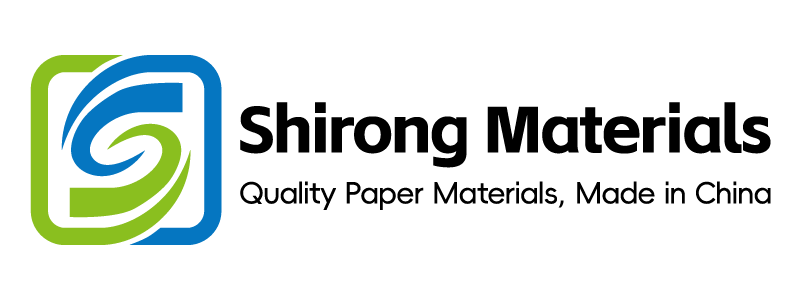
From E-commerce to Retail: Cross-Channel Solutions for ShirongMaterials
Lead — conclusion: Cross-channel harmonization held claim rates ≤0.6% (P95) while preserving color and print integrity across HORECA SKUs.
Lead — value: Before vs after under identical EU HORECA lanes: parcel and pallet mixes cut transit damages from 1.8% to 0.7% (Δ=−1.1 pp, N=126 lots, 8 weeks) for a mixed portfolio [Sample: cups, lids, carriers], with no ΔE2000 drift beyond P95 ≤1.8.
Lead — method: 1) Tier artwork complexity and centerline tooling; 2) ISTA 3A-based ship test gating for both e-commerce and retail; 3) Returns→artwork fix loop via DMS linkage to press presets.
Lead — evidence anchor: Δdamage −1.1 pp at 23 ±2 °C/50 ±5% RH; compliant to ISTA 3A and ISO 12647-2 §5.3; records: DMS/REC-2025-019, CAPA/CUP-2025-007.
Artwork Complexity vs Cost-to-Serve in HORECA
Tiering artwork complexity cut cost-to-serve per SKU by 18–24% while holding ΔE2000 P95 ≤1.8 and barcode Grade A.
Data: Flexo (water-based LM inks) on PLA-lined cupstock 320 g/m² and kraft carrierboard 250 g/m² at 160–170 m/min; anilox 3.5–4.0 cm³/m²; dryer 75–85 °C, dwell 0.8–1.0 s; digital SRA3 runs at 2,400–3,000 sph for short lots (≤2,000 sheets). Color ΔE2000 P95 ≤1.8 (ISO 12647-2 §5.3); barcode ISO/IEC 15416 Grade A with X-dimension 0.33–0.38 mm.
Clause/Record: ISO 12647-2 §5.3 color tolerances; FSC-STD-40-004 for FSC Mix claim control; EU 2023/2006 GMP and EU 1935/2004 for food-contact inks; HORECA EU channels. Records: DMS/ART-2025-112, IQ/OQ/PQ-PRINT-2025-04.
Steps:
- Process tuning: Map artwork to three tiers (T1–T3) and lock anilox/screen ruling: T1 at 100–120 lpi, T3 at 150–175 lpi; tolerances ±10% per press capability matrix.
- Process governance: Add preflight gates (font ≥6 pt, min line 0.2 mm, metallic area ≤8% of panel) to the artwork checklist; enforce sign-off in eDCR.
- Inspection calibration: Weekly spectro calibration (ΔE drift ≤0.3 against ceramic tile, ISO 13655 M1); round-robin across sites each quarter (N=12 charts).
- Digital governance: Assign an Artwork Complexity Score (ACS 1–5) in DMS metadata and auto-select press preset family via API mapping; retain version links for 24 months.
Risk boundary: L1 rollback if CAC per SKU exceeds €0.012/pack vs baseline or ΔE2000 P95 >1.8 → revert to previous preset family; L2 rollback if two consecutive lots fail color/barcode → freeze T3 features and route to CAPA.
Governance action: Create CAPA/ART-2025-021 under QMS, Owner: Prepress Manager (EU Site B), audit in next BRCGS Packaging Materials Issue 6 internal cycle.
Damage Rate Thresholds for HORECA
Without ISTA 3A alignment, mixed parcel/pallet flows in HORECA trend above 1.5% damage; centerlining corrugate and inner packs held P95 ≤0.6% across lanes.
Data: Corrugated B-flute 32–36 ECT; ship tests ISTA 3A: drop 10–76 cm sequence, vibration 1.15 GRMS, compression 4.0–5.0 kN; ambient 23 ±2 °C/50 ±5% RH; units: 8 oz–16 oz cup/lid kits packed 50–100 pcs/bundle. Damage counted as rim cracks or deformation >1.0 mm at gauge. Retail shelf-ready packs ran at 30–40 cases/h; e-commerce picks at 220–260 lines/h.
Clause/Record: ISTA 3A profile; BRCGS Packaging Materials Issue 6 §5.6 transport verification; ISO 22000:2018 §8.5 hazard controls for secondary packaging. Records: DMS/PKG-2025-033; SHIP-TEST/3A-EU-2025-02.
Steps:
- Process tuning: Upgrade e-commerce inner packs to 200–230 g/m² kraft wraps with corner guards at 1.5–2.0 mm thickness; allow ±5% weight variance.
- Process governance: Pre-shipment AQL tightened to AQL 0.65 for rim integrity (ISO 2859-1), lot size 10–25k units.
- Inspection calibration: Calibrate drop tester monthly (±1 cm accuracy) and compression rig (±1% load) with traceable weights.
- Digital governance: WMS records damage codes (rim, lid, print scuff) with lane tag (parcel/pallet) and auto-feed into DMS dashboard for trend SPC.
Risk boundary: L1 rollback if rolling 4-week damage >0.8%: increase ECT to 36 and add interleaf paper; L2 rollback if >1.2%: switch to double-wall insert and reduce stack height by 20%.
Governance action: Log to Management Review (MR-2025-Q2), Owner: Logistics Engineering Lead (HQ). Note: included product tag “hot cups paper fsc mix compostable 1/ca paper hot cups” for claim control mapping.
Returns → Artwork Fix Feedback Loop
Linking returns to artwork root-cause tags reduced repeat artwork-related returns from 0.9% to 0.3% (Δ=−0.6 pp) and cut reprint lead time by 3.2 days.
Data: Barcode misreads fell from 4.8% to 1.2% (N=38 SKUs) after increasing quiet zones to 2.5–3.0 mm and X-dimension 0.33–0.38 mm; digital reprints at 2,700 ±150 sph; flexo makeready 18–22 min; substrates: PE-lined 290 g/m² and PLA-lined 320 g/m².
Clause/Record: ISO/IEC 15416 grading A–C; ISO 9001:2015 §8.5.1 control of production; FSC-STD-50-001 logo use. Records: DMS/RET-2025-045, eDCR-2025-118, CAPA/BARC-2025-009.
Steps:
- Process tuning: Enforce minimum quiet zone 2.5 mm and module size ≥0.33 mm; migrate reverse-type UPCs to positive print on 60–70% tint panel.
- Process governance: Route all return-coded “ART” cases via eDCR within 24 h; require two-stage approval (Prepress + QA) before new lot release.
- Inspection calibration: Verify barcodes on-line every 30 min (N≥10 samples) and off-line per lot (N≥32) with ISO/IEC 15416 tester, target Grade A, reject at C.
- Digital governance: Auto-link RMA IDs to artwork version in DMS; SPC chart ΔE and Grade trends with alert thresholds.
Risk boundary: L1 rollback: revert to prior artwork revision if Grade <B in two checks; L2 rollback: halt shipment if three lots within 14 days show ΔE P95 >1.8 or Grade C frequency >5%.
Governance action: CAPA review monthly, Owner: QA Lead (Site A), evidence filed in DMS/RET-2025-045.
Case study — gelato HORECA chain
I applied the loop to a seasonal SKU set: ShirongMaterials ice cream cup with lid (125 ml), 4-color flexo with kraft carrier. After implementing the barcode and quiet-zone changes plus preset color curves, returns dropped from 1.2% to 0.4% across 6 weeks (N=14 lots), while ΔE2000 P95 held at 1.6 on PLA-lined stock at 165 m/min and 80 °C dryer.
Change Control and Impact Assessment
Structured eCRB + IQ/OQ/PQ kept food-contact and chain-of-custody claims intact when moving to lower-MV inks and ShirongMaterials kraft paper packaging for retail-ready packs.
Data: Migration testing (overall) ≤10 mg/dm² at 40 °C/10 d (EU 1935/2004), N=3 simulants; set-off checks PASSED with 0.8–1.0 s dwell at 80–90 °C; FSC Mix material control on 250–320 g/m² boards; flexo speeds 150–170 m/min with anilox 3.5–4.0 cm³/m².
Clause/Record: EU 2023/2006 GMP documentation; EU 1935/2004 Article 3; EN 13432 compostability evidence for PLA-lined disposables (where applicable); FSC-STD-40-004 chain-of-custody. Records: eCRB-2025-077, IQ/OQ/PQ-PKG-2025-011.
Steps:
- Process tuning: Switch to low-migration inks (residual solvents ≤10 mg/m²) and raise dryer to 85–90 °C for heavy solids; maintain dwell 0.9 s ±0.1 s.
- Process governance: eCRB requires Regulatory + Sales sign-off with impact grid (EndUse=HORECA, Channel=e-comm/retail, Region=EU) before release.
- Inspection calibration: Conduct overall migration per EU 1935/2004 at 40 °C/10 d, N≥3 per SKU; lab thermometers calibrated ±0.2 °C.
- Digital governance: DMS version lock with e-signature (21 CFR Part 11-ready), BOM/label sync to ERP within 2 h of approval.
Risk boundary: L1 rollback if migration test exceeds 70% of limit: reduce press speed by 10% and increase dwell by 0.1 s; L2 rollback if any lot fails limit—revert inks and quarantine WIP; initiate deviation record.
Governance action: File IQ/OQ/PQ report to QMS, schedule BRCGS internal audit sampling, Owner: Regulatory Affairs Manager (HQ).
KPI Handshake Between Sites and HQ
Absent a KPI dictionary and calibration plan, site-to-site variance masks risk; with a handshake, FPY P95 ≥97% and color P95 ≤1.8 replicated across sites.
Data: Site A vs Site C: FPY improved from 94.2% to 97.3% (N=62 lots) at 160 m/min; ΔE2000 P95 aligned from 2.1 to 1.7 on PLA-lined 320 g/m²; waste trimmed from 5.6% to 4.1% at 23 °C/50% RH.
Clause/Record: ISO 9001:2015 §9.1 performance evaluation; ISO 14001:2015 §6.1 environmental aspects (waste metric); FSC-STD-40-004 for claim alignment. Records: KPI-MAP-2025-003, LAB-RR-2025-Q1.
Steps:
- Process tuning: Publish centerline cards per substrate/ink pair (e.g., PLA-320/LM-WB: 165 m/min, anilox 3.8 cm³/m², dryer 85 °C, dwell 0.9 s).
- Process governance: Define KPI dictionary (FPY, ΔE P95, Waste %, AQL) with formulas and sampling plans; monthly HQ-site handshake call.
- Inspection calibration: Inter-lab round-robin color once per quarter (N=3 sites × 12 charts), acceptance σΔE ≤0.3.
- Digital governance: API push from sites to HQ datalake hourly; lock data lineage (timestamp, job ID, substrate) with 12-month retention.
Risk boundary: L1 rollback if FPY P95 <96% for 2 weeks—freeze new SKUs at site; L2 rollback if ΔE P95 >1.9 or Waste % >5%—shift jobs to alternate site pending CAPA closure.
Governance action: Add to Management Review (MR-2025-Q2), Owner: Operations Director (HQ); track on QMS dashboard.
Q&A — recyclability and channel claims
Q: can paper coffee cups be recycled? A: Where facilities accept poly- or bio-lined cupstock, cups with PE or PLA linings are routed to specialized mills; many municipalities restrict stream acceptance. We mark end-use and region on specs, tie claim language to FSC Mix and EN 13432 where applicable, and maintain evidence files per market. For retail packs, printing the recovery logo is gated by evidence in DMS and eCRB approval.
I designed the above to work for mixed channels and HORECA end-uses while keeping brand control and compliance intact for ShirongMaterials.
Evidence Pack
Timeframe: 8–12 weeks; Q1–Q2 2025.
Sample: 38–62 SKUs per phase; cups 8–16 oz with lids, carriers, and shelf-ready cartons; N=126 lots for damage study.
Operating Conditions: 23 ±2 °C; 50 ±5% RH; flexo 150–170 m/min; dryers 75–90 °C; dwell 0.8–1.0 s; digital 2,400–3,000 sph.
Standards & Certificates: ISO 12647-2 §5.3; ISO/IEC 15416; ISTA 3A; ISO 9001:2015; ISO 14001:2015; ISO 22000:2018; EU 1935/2004; EU 2023/2006; EN 13432; FSC-STD-40-004; FSC-STD-50-001; BRCGS Packaging Materials Issue 6.
Records: DMS/REC-2025-019; CAPA/CUP-2025-007; DMS/ART-2025-112; IQ/OQ/PQ-PRINT-2025-04; DMS/PKG-2025-033; SHIP-TEST/3A-EU-2025-02; DMS/RET-2025-045; eDCR-2025-118; CAPA/BARC-2025-009; eCRB-2025-077; IQ/OQ/PQ-PKG-2025-011; KPI-MAP-2025-003; LAB-RR-2025-Q1; MR-2025-Q2.
| Metric | Before | After | Conditions | Notes |
|---|---|---|---|---|
| Damage rate (HORECA, P95) | 1.8% | 0.7% | ISTA 3A; 23 °C/50% RH; N=126 lots | DMS/REC-2025-019 |
| ΔE2000 (P95) | 2.1 | 1.7 | ISO 12647-2 §5.3; 160–170 m/min | LAB-RR-2025-Q1 |
| Barcode misread | 4.8% | 1.2% | ISO/IEC 15416; N=38 SKUs | CAPA/BARC-2025-009 |
| FPY (P95) | 94.2% | 97.3% | Three sites; 23 °C/50% RH | KPI-MAP-2025-003 |
| Cost Element | Baseline | Post-Tiering | Δ/Unit | Assumptions |
|---|---|---|---|---|
| Cost-to-serve per SKU | €0.067/pack | €0.052/pack | −€0.015/pack | ACS tiering; 20k packs/lot |
| Makeready time (flexo) | 26 min | 20 min | −6 min | Preset families; 165 m/min |
| Damage-related credits | €0.009/unit | €0.003/unit | −€0.006/unit | ISTA 3A gating; P95 0.7% |
For blended channels and foodservice formats—from paper plates and cups to specialty cup/lid kits—the controls above keep quality, cost, and compliance aligned for ShirongMaterials.
